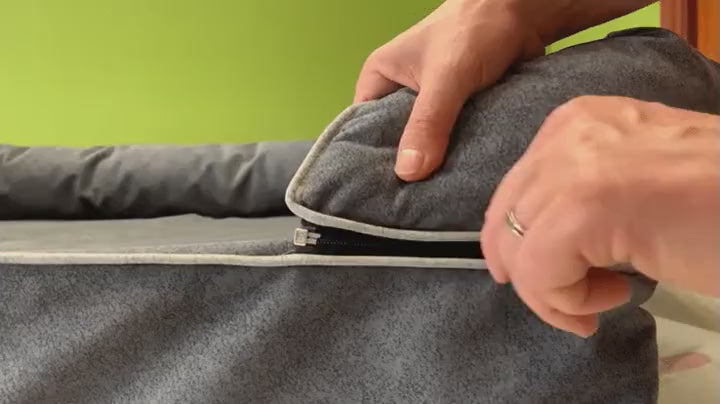Separation anxiety is a common problem in dogs that can result in destructive behaviors and mental health problems. While some dogs may experience separation anxiety mildly, others may experience it severely, which can negatively affect their quality of life. In this article, we will discuss how to prevent and treat separation anxiety in dogs. We will also discuss some ways to help your dog feel more comfortable and secure when he is home alone.
What is separation anxiety?
Separation anxiety is a behavioral disorder that affects some dogs when they are separated from their owners. Symptoms can vary, but often include excessive barking, crying, destruction of objects and furniture, and in some cases, urinary or fecal incontinence. Separation anxiety can be caused by a variety of factors, such as changes in the dog's daily routine, lack of socialization, fear of loud noises or strangers, and other behavioral problems. In some cases, it can also be caused by traumatic experiences or lack of attention and care from the owner.
Preventing separation anxiety in dogs
Preventing separation anxiety in dogs can be easier than treating it. Some of the things you can do to prevent separation anxiety include:
Early education.
Early education is essential to preventing separation anxiety in dogs. It is important to get puppies used to being alone and help them become comfortable in their own company. This may involve leaving them alone for short periods of time in a safe, comfortable space and rewarding them for good behavior. It is important to make sure that you do not reinforce unwanted behaviors, such as crying or anxiety.
Establish a daily routine
Dogs need a consistent daily routine to feel safe and comfortable. This can include regular feeding times, walks and playtime. By establishing a daily routine, your dog will know what to expect and will feel more secure in your home when alone.
Environmental Enrichment
Environmental enrichment can help prevent separation anxiety in dogs by providing activities and toys to keep them occupied and entertained. This can include puzzle toys, chew toys and fetch toys. Environmental enrichment can also help reduce anxiety and boredom in dogs.
How to treat separation anxiety in dogs
If your dog is already experiencing separation anxiety, there are a few things you can do to help treat the problem.
Behavioral training
Behavioral training can help treat separation anxiety in dogs. A professional trainer can help identify unwanted behaviors and work with you and your dog to develop an effective training plan. Training can involve behavior modification techniques, such as desensitization and counterconditioning. Desensitization involves gradually exposing your dog to situations that make him anxious, while counterconditioning involves changing the way your dog perceives those situations.
Medications
In some cases, medications may be necessary to treat separation anxiety in dogs. Medications can help reduce anxiety and improve your dog's quality of life. It is important to work with a veterinarian to determine the best course of action for your dog. Medications should not be the only solution and should be used in conjunction with other treatment techniques, such as behavioral training.
Supportive therapy
Supportive therapy may be helpful for some dogs experiencing separation anxiety. This may include individual or group therapy, and can help your dog develop skills to better manage anxiety and stress.
How to help your dog feel more comfortable and confident when home alone.
In addition to preventing and treating separation anxiety in dogs, there are some things you can do to help your dog feel more comfortable and secure when home alone.
Leaving comforting objects
Leaving comforting objects, such as toys or clothing that smells like you, can help your dog feel more comfortable when alone. These objects can provide a sense of security and familiarity.
Provide a safe and comfortable space
Providing a safe and comfortable space for your dog can help reduce anxiety and stress. This can include a comfortable bed, toys, and access to food and water.
Use soothing music or sounds
Soothing music or sounds can help your dog feel more comfortable and secure when alone. Classical music or nature sounds can be particularly relaxing for dogs.
Hire a dog sitter or walker
If your dog experiences severe separation anxiety, it may be helpful to hire a caregiver or walker to visit during the day. This can provide a sense of security and ease your dog's anxiety. Separation anxiety is a common problem in dogs, but there are many things you can do to prevent and treat it. Some of the ways to prevent separation anxiety include early education, establishing a daily routine and environmental enrichment. If your dog is already experiencing separation anxiety, you can treat it with training.














